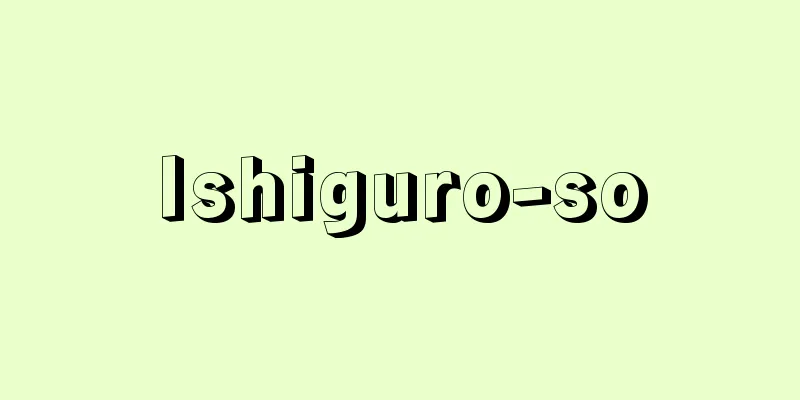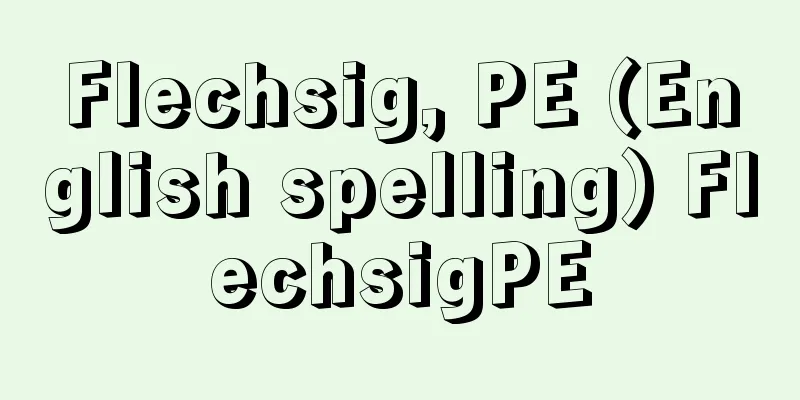Academic achievement

|
Academic ability is an abstract concept and has no clear definition, but it can be provisionally defined as "the degree of achievement of the goals of the educational curriculum." The reason is that the School Education Act (Articles 57, 90, and 102) stipulates that those who can enter a school beyond compulsory education are "those who have graduated from the previous school type or who are recognized to have academic ability equivalent to or higher than that of the graduate," and academic ability as referred to in the Act can be considered to indicate the degree of achievement of the goals of the school level in question. The School Education Act (Article 30, Paragraph 2) stipulates that in elementary, junior high, and high schools, "particular attention must be paid to nurturing the ability to think, judge, express, and other abilities necessary to use these to solve problems, as well as to acquiring basic knowledge and skills, and to cultivating an attitude of proactively working on learning." These three elements of acquisition, utilization, and attitude are generally referred to as the three elements of academic ability. Since the 1998 curriculum guidelines were issued, "life skills" have been the goal of the curriculum for elementary, junior high, and high schools. These skills are made up of three components: solid academic ability, a rich humanity, and a healthy body. Of these, what solid academic ability points to corresponds to the three elements of academic ability. In addition, although the viewpoints of evaluation shown in the Guidance Record differ for each subject, they are described in the framework of four viewpoints, "interest, motivation, and attitude," "thinking and judgment," "expression and skills," and "knowledge and understanding," while corresponding to the three elements of academic ability. Therefore, rather than setting independent goals for each subject and activity, the idea is to cultivate the three elements of academic ability in each subject and activity, while converging them into "the ability to live." [Basic academic ability] The foundation of academic ability is sometimes called basic academic ability. The School Education Act stipulates (Article 21) that the goal of compulsory education is to cultivate basic understanding, abilities, skills, and knowledge in various fields, and everything cultivated in compulsory education can be said to be basic academic ability. In addition, specific abilities such as the so-called 3R's of reading, writing, and arithmetic, which are considered necessary for daily life, can also be called basic academic ability. Although it is difficult to clearly define basic academic ability, it can be summarized as "the academic ability necessary to achieve educational goals or solve problems and issues that may be faced subsequently." [Achievement test] Achievement tests are tests to quantitatively or gradedly grasp the level of academic ability. They are also called academic achievement tests or academic achievement surveys. In most cases, they consist of a certain number of test items that can be considered to measure academic ability, and the test results are quantified using an index based on the number of correct answers, and are interpreted according to separately established standards. Among the procedures for creating academic achievement tests, a series of procedures including procedures for ensuring a certain level of validity and reliability, as well as methods of administration and scoring, are called standardization, and academic achievement tests created through this procedure are called standardized academic achievement tests. There are two types of standardized academic achievement tests: target-based tests (so-called absolute evaluation), in which specific achievement goals are set according to the evaluation perspective and evaluation standards for those goals are set, allowing students to know the degree to which achievement goals have been achieved according to national standards, and population-based tests (so-called relative evaluation), in which scores are created so that they are normally distributed, allowing students to know the relative position of the examinee's academic ability in the national comparison. At the opposite end of the spectrum from standardized academic achievement tests are teacher-created tests. These are made up of only the items necessary to grasp the purpose of educational goals and evaluation perspectives, and the degree to which specific educational goals have been achieved in actual classes, and are used as the main material for evaluating and grading each subject to be recorded in the school record. Because they are not standardized, they are not inferior to standardized academic achievement tests, and have the advantage of being highly relevant to the actual learning content and instruction that has been implemented, making them easy to use directly to improve learning and instruction. In any academic ability test, there are restrictions on the types of items that can be used, the time available for administration and grading, etc., and the academic ability that is tested is inevitably limited. Therefore, what can be measured by an academic ability test always tends to be a part of academic ability. However, there are increasing attempts to broaden the scope of academic ability that is tested by adopting qualitative evaluation methods (such as rubrics) that do not clearly define right and wrong. Academic ability tests are also used to quantitatively determine whether a student has the academic ability required to advance to a higher school, and to select students who wish to advance to higher education. Academic ability tests for selection are called high-stakes tests, because one test taken for selection has a large impact on the candidate's future career path. Note that tests that are not based on previously learned material, but instead aim to measure aptitude, such as reasoning ability and interests, are called aptitude tests and are sometimes distinguished from academic ability tests. [International comparison of academic achievement tests] Well-known international academic achievement surveys include the Trends in International Mathematics and Science Study (TIMSS) and the OECD's Programme for International Student Assessment (PISA). TIMSS is a survey conducted on 4th and 8th graders (4th grade elementary school and 2nd grade junior high school in Japan), and aims to measure the achievement of students in arithmetic, mathematics, and science at the primary and secondary education stage using international standards and to clarify the relationship with the learning environment of students. PISA is a survey that measures the extent to which 15-year-olds who have completed compulsory education can use the knowledge and skills they have in various situations in real life, dividing it into three literacies: reading, mathematics, and science. The reason it is called literacy rather than ability is to express the breadth of knowledge, skills, and abilities. The higher-level concept of these three literacies is key competency. This is defined by the OECD research project (DeSeCo) as a set of abilities that bring about valuable results for society and individuals, help people adapt to important challenges in various situations, and are important not only to certain professionals but to all individuals. In other words, key competencies consist of three categories: the ability to interactively utilize social, cultural, and technological tools, the ability to form human relationships in diverse social groups, and the ability to act autonomously. →Authentic evaluation →Educational evaluation →Literacy [Yamamori Mitsuaki] Latest Sources Psychology Encyclopedia Latest Psychology Encyclopedia About Information |
|
学力は抽象的な概念であり,明確な定義はないが,「教育課程の目標に対する達成の程度」と暫定的に定義できよう。その理由は,学校教育法(第57条,第90条,第102条)においては,義務教育を超える段階の学校に入学できるのは「前段階の学校種の卒業もしくはこれと同等以上の学力があると認められた者」と規定されており,同法でいうところの学力が指し示すのは,当該学校段階の目標に対する達成の程度であるとみなせるからである。学校教育法(第30条第2項)では,小・中・高等学校においては「基礎的な知識及び技能を習得させるとともに,これらを活用して課題を解決するために必要な思考力,判断力,表現力その他の能力をはぐくみ,主体的に学習に取り組む態度を養うことに,特に意を用いなければならない」と規定されており,これら習得・活用・態度の三つをまとめて一般的に学力の三要素とよばれる。1998年告示の学習指導要領以降,小・中・高等学校の教育課程の目標とされてきている「生きる力」は,確かな学力,豊かな人間性,健やかな体の三つの構成要素からなり,それらのうち,確かな学力の指し示すものが学力の三要素と対応している。 また,指導要録に示された評価の観点は各教科で異なるものの,学力の三要素に対応しながら,「関心・意欲・態度」,「思考・判断」,「表現・技能」,「知識・理解」の四つの観点の枠組みで記述されている。したがって,教科および活動ごとに独立した目標が立てられているのではなく,各教科と諸活動において学力の三要素を養いつつ,「生きる力」に収斂させていくのが理念とされているととらえられる。 【基礎学力】 学力の土台となる部分を基礎学力とよぶことがある。学校教育法では義務教育の目標としてさまざまな領域の基礎的な理解,能力,技能,知識を養うことが規定(第21条)されており,義務教育で養われるのはすべて基礎学力であるといえる。また,日常生活を営むうえで必要と考えられている読・書・算のいわゆるスリーアールズ3R'sといった特定の能力も基礎学力といえる。このように基礎学力の明確な定義は困難であるが,「後続して直面しうる教育目標の達成あるいは問題,課題の解決に必要な学力」とまとめられよう。 【学力検査achievement test】 学力の程度を数量的あるいは段階的に把握するのが学力検査であり,学力テスト,学力調査ともいう。多くの場合,学力を測定しているとみなせる一定数の検査項目で構成され,検査結果は正答項目数に基づいた指標によって数値化され,別に定められた基準によって解釈される。 学力検査を作成する手続きの中でも,一定以上の妥当性と信頼性を確保するための手順,および実施方法,採点方法を含む一連の手続きを標準化といい,この手続きを経て作成された学力検査のことを標準学力検査という。標準学力検査には,評価の観点別に目標を具体化した達成目標とそれに対する評価基準が設定され,全国的な基準による達成目標の到達度を知ることができる目標基準準拠検査(いわゆる絶対評価)と,得点が正規分布するように作成されており,受検者の学力の全国的な相対的位置を知ることができる集団基準準拠検査(いわゆる相対評価)の2種類がある。 標準学力検査の対極に位置するのが教師作成検査である。これは教育目標や評価の観点の趣旨,実際の授業における具体的な教育目標の到達度を把握するために必要なだけの項目によって構成され,指導要録に記載する各教科の評価,評定を行なう際の主要な資料として用いられる。標準化されていないために標準学力検査と比べて劣るということはなく,実際に扱われた学習内容や実施された指導との関連性が高く,学習,指導の改善に直接的に利用しやすいという利点がある。 いかなる学力検査であっても,利用できる項目の種類,実施や採点にかけられる時間などに制約があり,検査対象となる学力は限定的とならざるをえない。そのため,学力検査で測定できるのはつねに学力の一部分になりがちである。しかし,正誤が一義的に定まらない質的評価(ルーブリックなど)の方法を取り入れ,検査対象となる学力の範囲を広げる試みが広がりつつある。 また学力検査は,上級学校への進学に必要な学力が備わっているかを数量的に記述し,進学希望者を選抜するためにも用いられる。選抜のための学力検査は,一度の受検が受検者の将来の進路に大きな影響を及ぼすため,ハイステイクステストhigh-stakes-testとよばれる。なお,既習事項に基づく出題ではなく,推論能力,興味等の適性の測定を目的とした検査を適性検査aptitude testとよび,学力検査と区別することがある。 【学力検査の国際比較】 国際的な学力調査としてよく知られているものに国際数学・理科教育動向調査(TIMSS)と,OECDによる国際学習到達度調査(PISA)がある。TIMSSは4年生と8年生(日本では小4と中2)を対象に行なう調査であり,初等中等教育段階における児童生徒の算数・数学,理科の到達度を国際的な尺度によって測定し,児童生徒の学習環境等との関係を明らかにすることを目的としている。PISAは義務教育修了段階の15歳児がもっている知識や技能を実生活のさまざまな場面でどれだけ活用できるかを,読解,数学的,科学的の三つのリテラシーliteracyに分けて調査を行なうものである。能力ではなくリテラシーとよぶのは,知識,技能,能力の幅の広さを表現するためである。これら三つのリテラシーの上位概念がキーコンピテンシーである。これはOECDの研究プロジェクト(DeSeCo)が定義した,社会や個人にとって価値のある結果をもたらし,さまざまな状況の重要な課題への適応を助け,特定の専門家だけでなくすべての個人にとって重要な能力を指している。すなわちキーコンピテンシーは,社会・文化的および技術的道具を相互作用的に活用する能力,多様な社会集団における人間関係形成能力,自律的に行動する能力の三つのカテゴリーから構成される。 →オーセンティック評価 →教育評価 →リテラシー 〔山森 光陽〕 出典 最新 心理学事典最新 心理学事典について 情報 |
<<: Academic achievement test - gakuryoku kuestu
Recommend
Stomatopoda
...A general term for arthropods belonging to the...
Yatona (hired woman, hired waitress) - Yatona
A type of waitress unique to western Japan, mainly...
Rio de Janeiro (English spelling)
The capital of the state of Rio de Janeiro in sout...
Chinese primrose (English spelling)
...Flower colors include red, purple, peach apric...
Bennettitales
…the name of a group of plants that lived only du...
Reed - Reed
Scientific name: Phragmites communis Plants. Peren...
FRP - Force Resilience
A composite material made by adding fibers such as...
Trent [river] - Trent
The Humber is a river that originates in the south...
Complete linked system
…In contrast, when the names of two or more candi...
Thouvenin, J.
…However, with the outbreak of the French Revolut...
Cotentin Peninsula - Cotentin Peninsula (English spelling)
A peninsula jutting out into the English Channel ...
Expelled from Paradise
Painting by Masaccio, Cacciata dei progenitori dal...
yakow
...A male domestic yak is crossed with a female c...
Hedge, FH (English spelling) HedgeFH
…Transcendentalism, transcendentalism. After the ...
Illusion - Illusion
…However, if there are many taxation preferential...






![Southern [town] - Nanbu](/upload/images/67cc6a7e7f696.webp)


